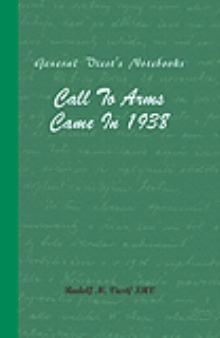An Immigrant's Story
by
Book Details
About the Book
An Immigrant’s Story: Summary Made in Czechoslovakia The best laid plans don’t always work out. Born and educated in Europe, I came to the United States for one year of advanced studies in my chosen field of civil engineering. The February 1948 communist coup d’etat in Czechoslovakia converted the student visitor into an immigrant. Starting with early recollections, the story evolves from an account of the grade school education in my native Bratislava, the capital of Slovakia, and the early years of high school in eastern Slovakia’s metropolis Košice. Summer vacations both at home and abroad, hobbies such as sports and photography, and the family background are presented with a broad brush. The last years of high school, attended in Bratislava after the return from a brief residence in Košice, were marked by gathering clouds on the international scene. This was also the time of learning modern foreign languages. Instruction in German was a required subject for all students in the eight-year high school. To improve my conversational ability, I spent a couple of summer months with German families, one in northern Bohemia and the other in Austria. In the fourth grade of high school, we could choose between English and French as the second modern foreign language. English was my choice. Large concentrations of German armed forces along the borders of Czechoslovakia in May 1938 made it obvious that a military conflict between the two countries was a distinct possibility. Negotiations between Hitler with Mussolini on one side and Chamberlain with Daladier on the other postponed the beginning of the war. However, Czechoslovakia was forced to cede substantial territories along its borders with Germany, Hungary and Poland, making the country defenseless. Hitler took advantage of it the following March when he sent his troops to occupy Bohemia and Moravia outright. Just prior to that occupation, Hitler induced the Slovak pro-German politicians to separate Slovakia from the Czech lands by declaring it an independent state. The breakup of Czechoslovakia and the German occupation of the Czech lands led shortly to the birth of a number of underground organizations. They were a part of an extensive liberation movement active both at home and abroad throughout the Second World War. The movement abroad was first organized in Paris. It was transferred to London on the fall of France. It was headed by the last president of the pre-Munich Czechoslovakia, Dr. Edvard Beneš. A few years later, as the eastern front was approaching the borders of the former Czechoslovakia, the leaders of the underground in Slovakia organized an uprising against the quisling government in Bratislava and its German overlords. When the German army started entering Slovakia to supress growing guerilla activities, a call to arms was issued by the underground leadership: the Slovak National Uprising started on August 29, 1944. The bulk of the insurgent military forces were soldiers and officers of the former Slovak army. Guerillas accounted for about 12 percent of the total of the 60,000 lightly armed insurgents. For two months the insurgents held off the German army that was eventually attacking from all sides. The Russian army did not cross the Carpathian mountains in time to be of any help to the Uprising. Banská Bystrica, the capital of the insurgent territory, fell on October 27. From then on, the resistance was continued in small units dispersed throughout the mountainous regions of the country. The Germans captured thousands of soldiers and other insurgents including the two commanders of the Uprising, Generals Viest and Golian. Many of the prisoners, the two leaders among them, never returned. Enrollment at the Slovak Technical University in Bratislava to study civil engineering followed the graduation from high school in 1941. The course took nominally fou
About the Author
Dr. Viest is a consultant offering services in structural engineering. Prior to entering private practice, he was employed by the University of Illinois at Champaign-Urbana, the Transportation Research Board of the National Academy of Sciences and the Bethlehem Steel Corporation. His research on composite construction led to design rules for bridges adopted by the American Association of State Highway Officials in 1956 and for buildings adopted by the American Institute of Steel Construction (AISC) in 1961. His further activities pointed the way toward new design methods characterized by the general designation Load and Resistance Factor Design. Dr. Viest is a member of the National Academy of Engineering, an Honorary Member of the American Society of Civil Engineers and the recipient of the 2004 AISC Special Achievement Award. In 2002 he was awarded the title Doctor Honoris Causa by the Technical University of Košice in his native Slovakia. 2004/08/13



